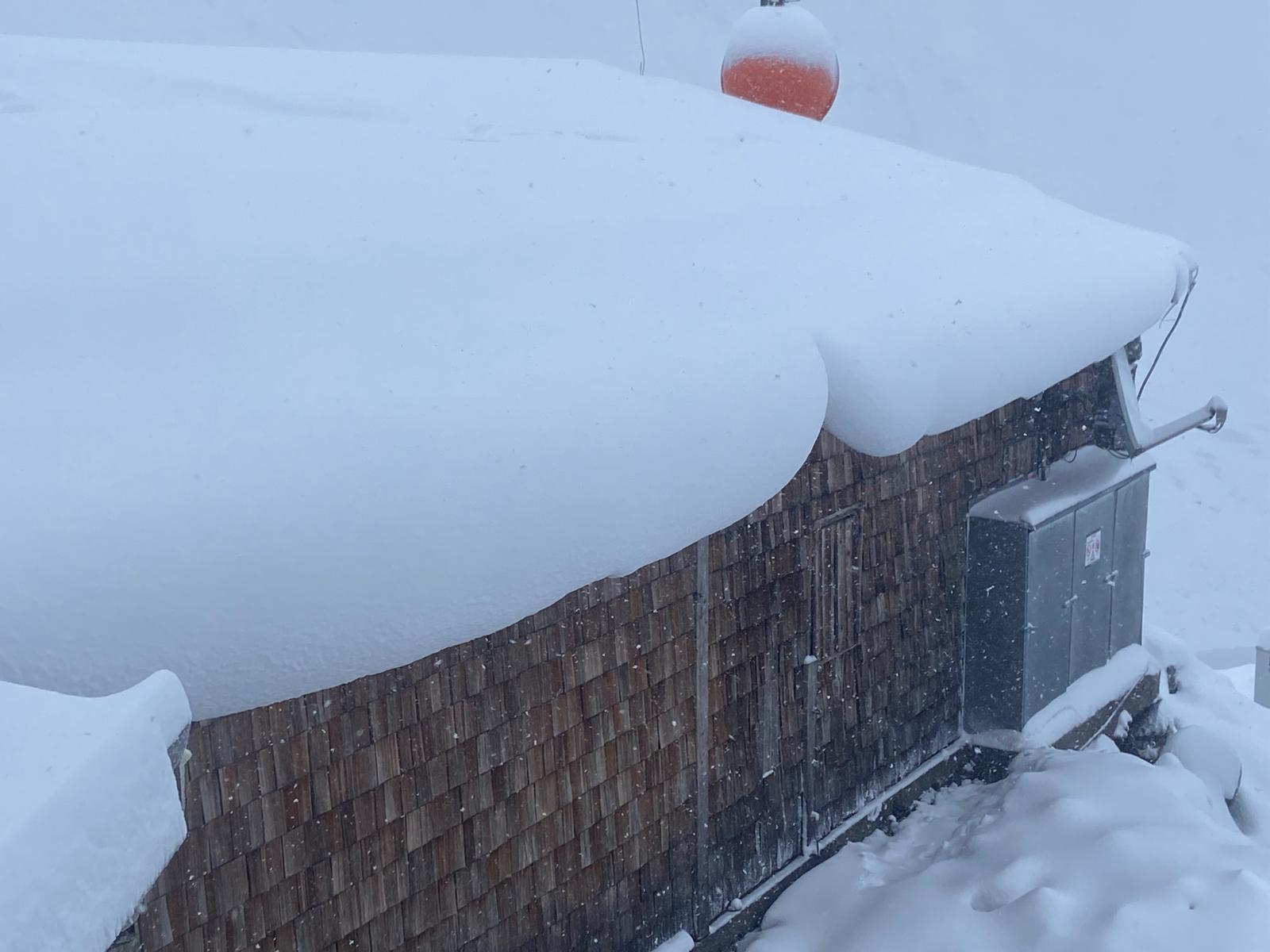There has been significant snowfall in recent days particularly in the Zillertal Alps and Hohe Tauern: 30-80cm of fresh fallen snow has been registered at about 2800m since Monday evening, 07.07, most of which fell in the Venediger Massif. Strong velocity northerly winds transported the fresh snow far-reachingly. Freshly generated snowdrift accumulations can be prone to triggering in very steep gullies and bowls for a short time. In case of solar radiation and as temperatures rise, small wet loose-snow avalanches can be expected on extremely steep slopes.
Caution is the byword in the next few days, including for dangers of possible falls in glaciar crevices.
Low pressure front brought lots of precipitation, dropping temperatures
Cool, moist air masses from the north have led to heavy precipitation and lower temperatures since Monday, 07.07. Especially on Monday night, the snowfall level in places descended nearly to the treeline. At great heights, strong northerly winds, even reaching storm strength in gusts, were blowing. Most of the fresh snow fell in the eastern part of the Main Alpine Ridge, from the Zillertal Alps as far as the Glockner Massif.
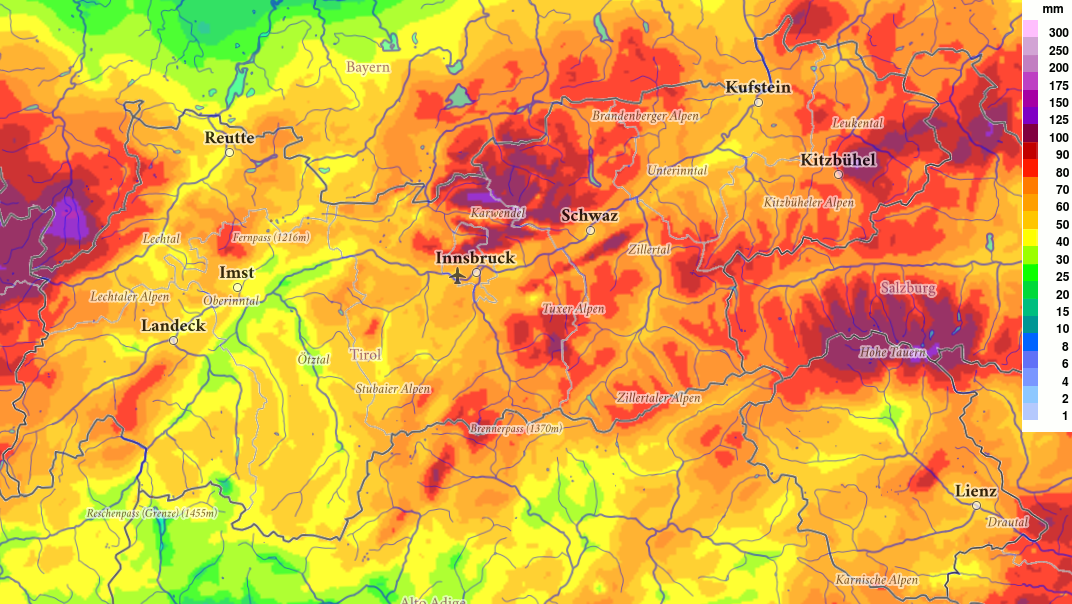
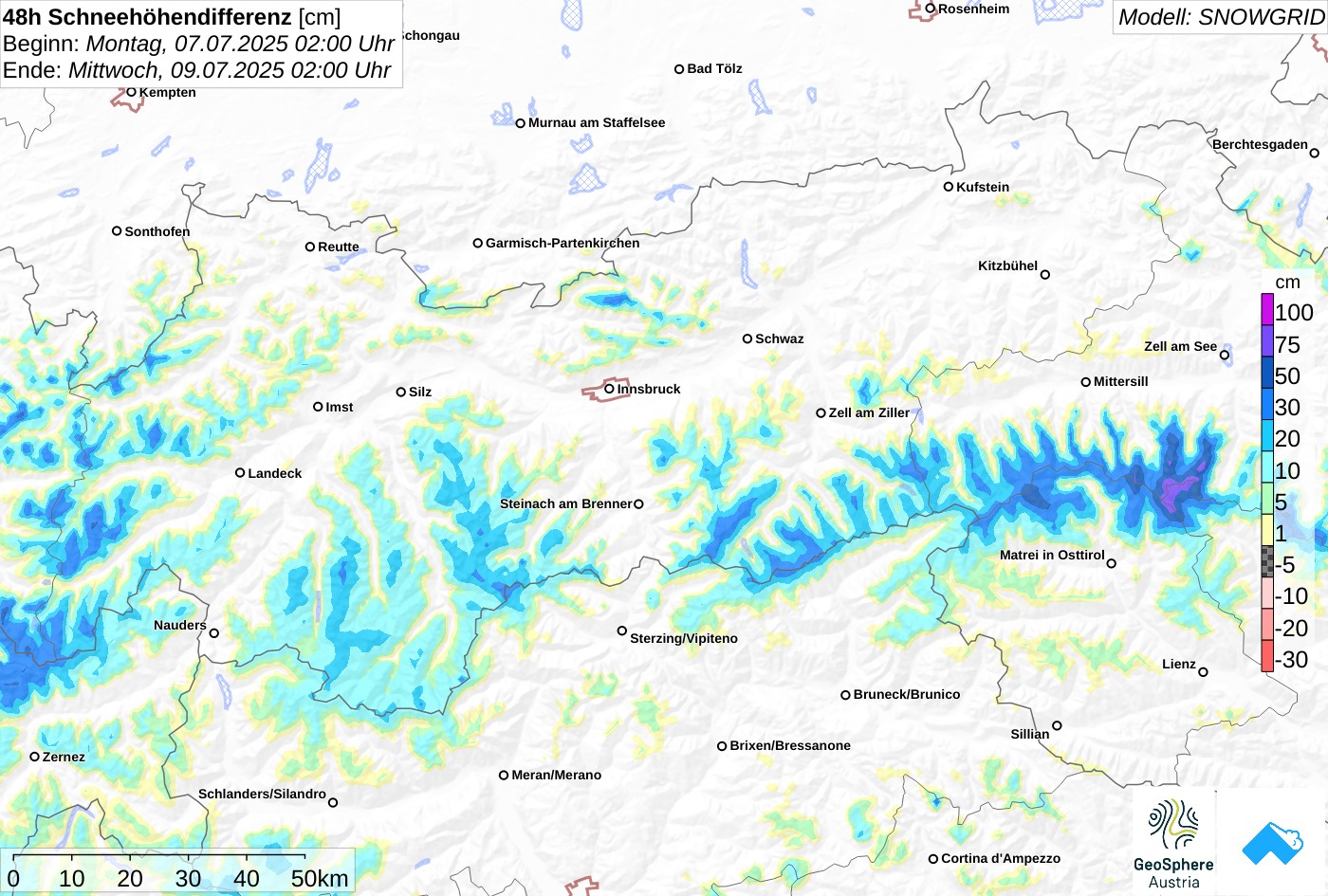
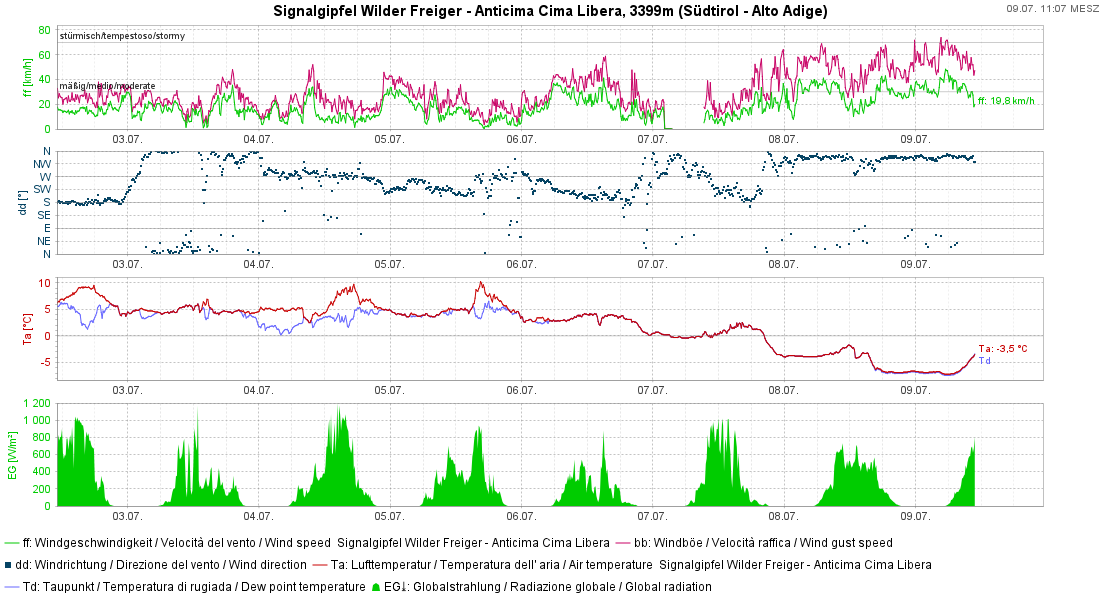
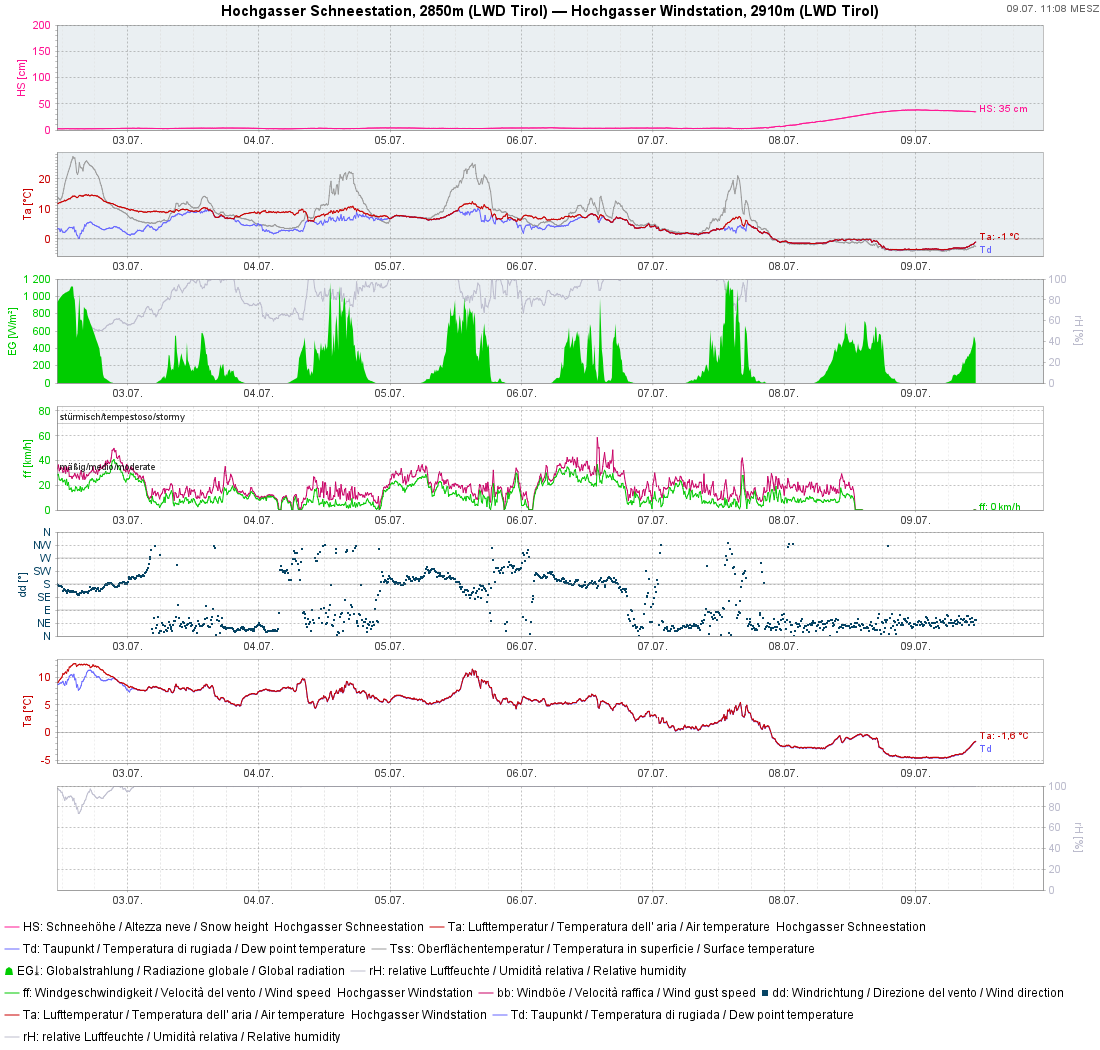
Effects on avalanche danger
Particularly in the mountains in the eastern sector of the Main Alpine Ridge at high altitudes, caution towards freshly formed small snowdrift accumulations is called for. These drifts will be prone to triggering only for a short time after they have been generated. Avalanche prone locations tend to increase with ascending altitude. Special caution urged in terrain where falls are possible.
As a result of direct and diffuse solar radiation, as well as gradually rising temperatures, increasingly frequent naturally triggered moist loose-snow slides can be expected in extremely steep terrain (>40 degrees).
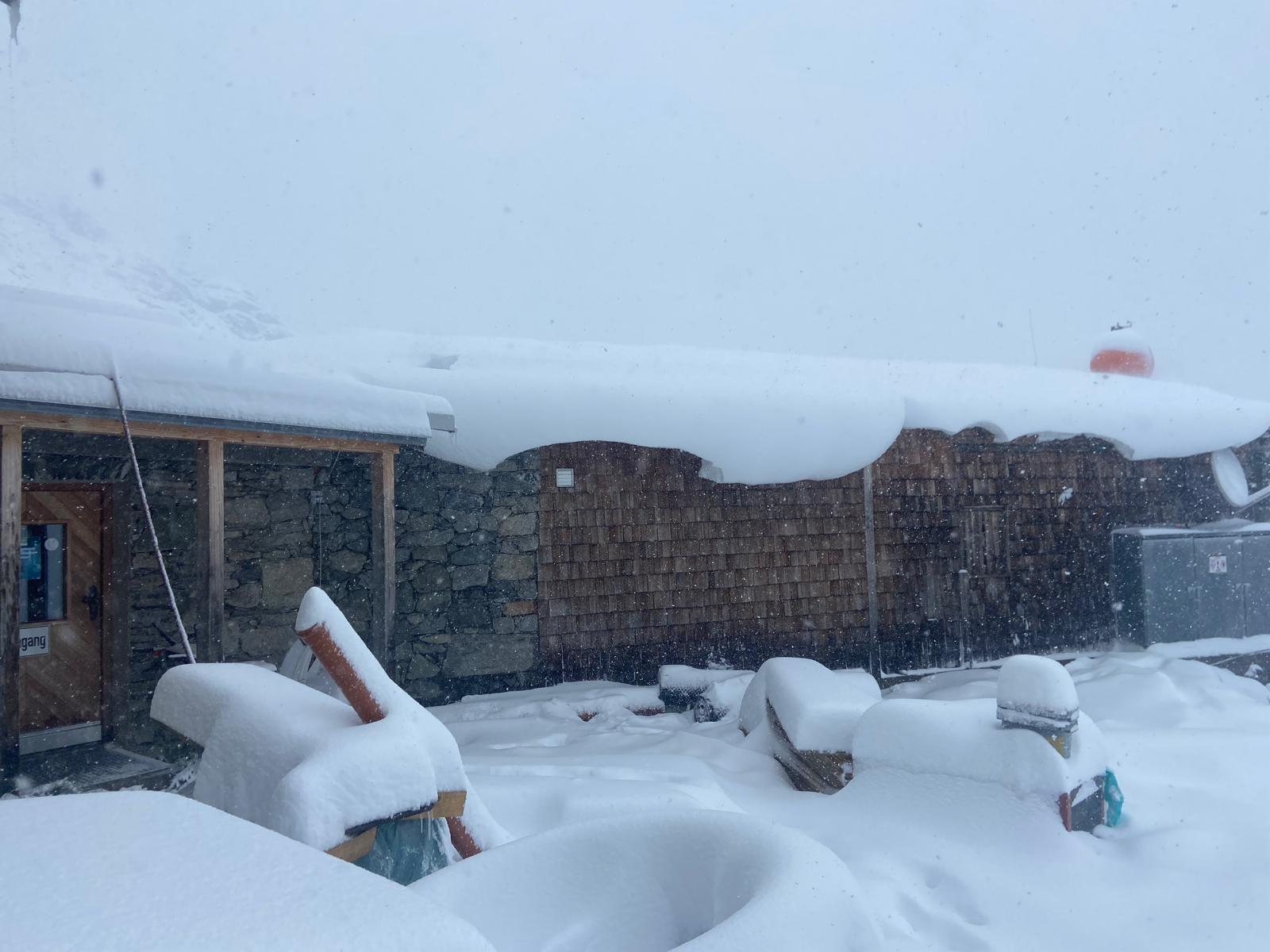
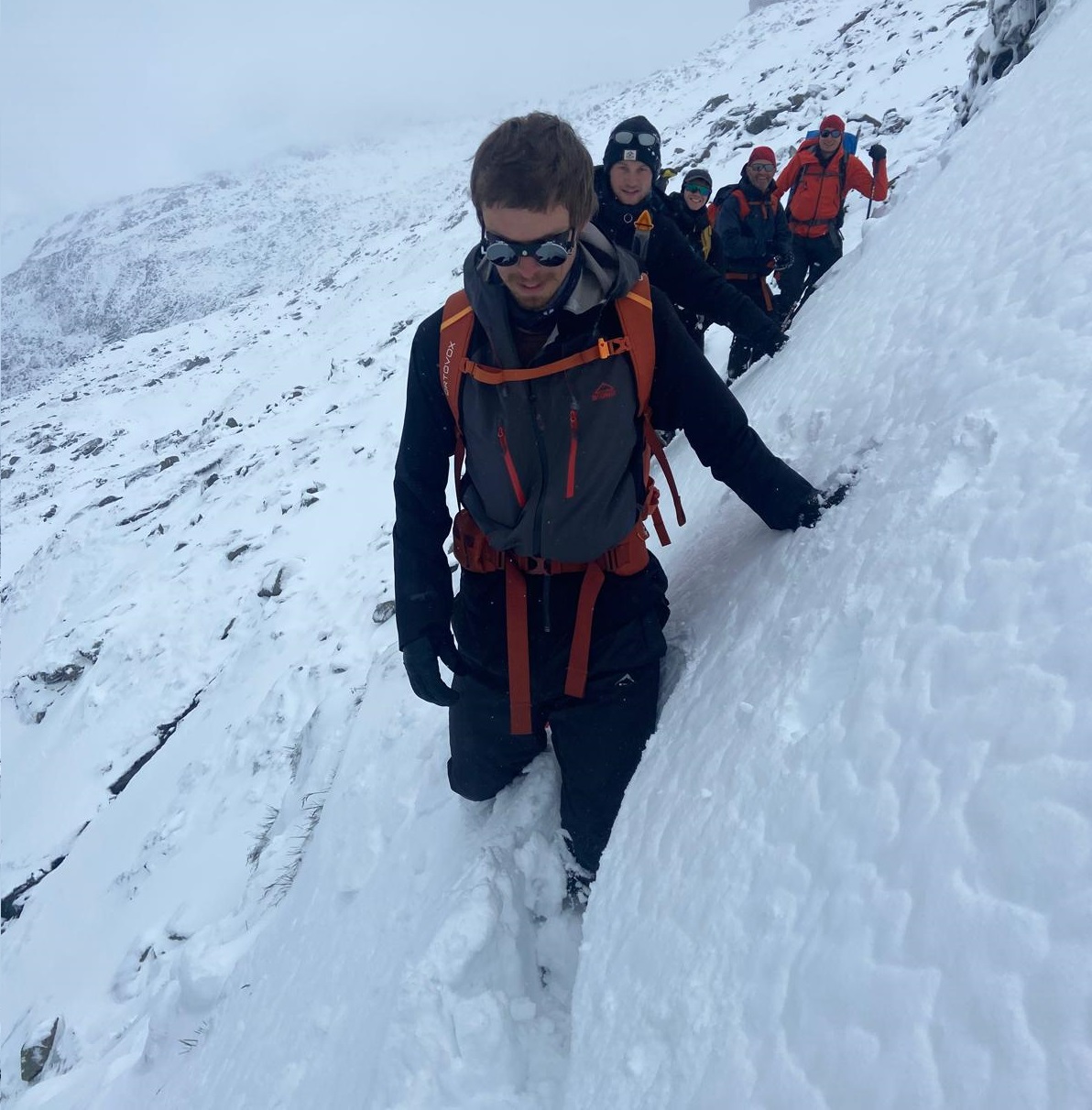
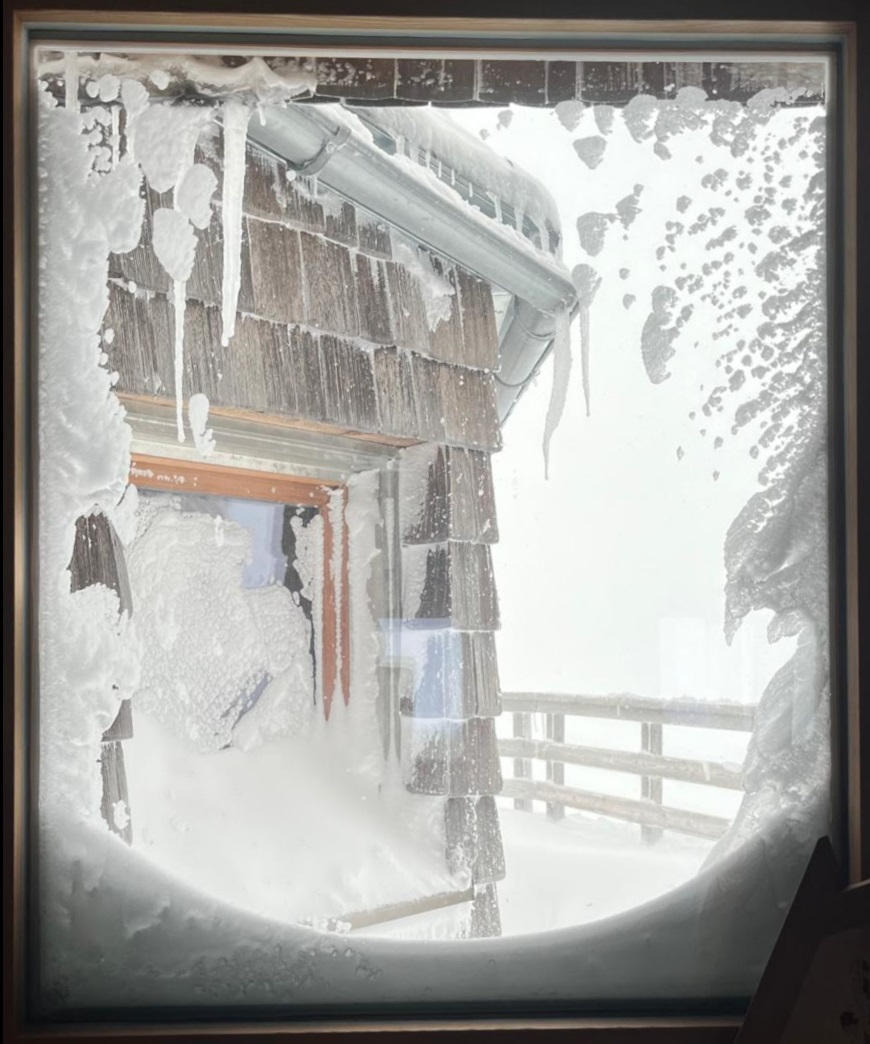
The weather will remain variable over the next few days, particularly on the Main Alpine Ridge and in North Tirol. Large amounts of precipitation are no longer to be expected, and temperatures will rise again. The danger of dry-snow avalanches will quickly recede. Individual wet loose-snow slides are possible in extremely steep terrain.
Caution: covered glacier crevices
A source of danger never to be underestimated: the snow-blanketed or drifted crevices on glaciers. Just a few days ago, observers reported conditions like in August, mostly the result of last winter’s shallow snow depths. In regions where recent snowfall was heavy, open glacier crevices have now been covered at least partially, making them difficult to recognize.
